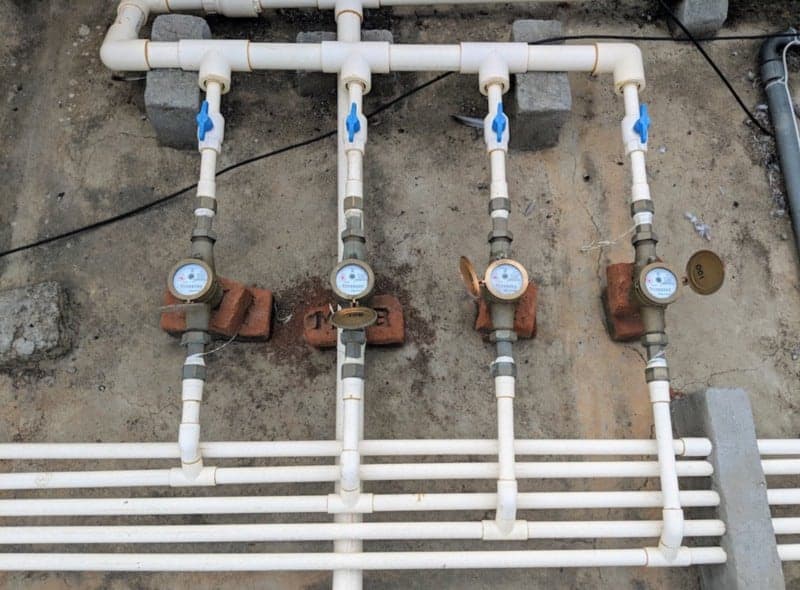Multi-storied apartments are everywhere, dotting the skyline in our cities. Ground plus 19 is the norm rather than the exception. As apartment dwellers everywhere are finding out this summer, water is a major challenge to manage, with the city running scarce to supply this resource.
If you are a new buyer, it would be wise to ask the following questions from the builder before you make that investment of a crore or more. This is a simple checklist:
What are the sources of water for the flat especially in summer? Bore wells are simply unable to supply water when densities of 70 flats per hectare are being reached. There are new developments where borewells as deep as 1200 feet are running dry even before the construction is complete, all 20 of them. Borewells are not dependable sources of water at all.
If the flats receive piped supply from the state utility, for example if you are in Bangalore and the flat has a BWSSB connection, how much water is expected from them per day? It is not enough to simply have a connection from the utility, it is the volume of water that arrives every day which is important. In the Bangalore example again, the city currently has run out of water for new connections and till the next phase of the Cauvery water arrives, it is unlikely that the demand for large apartments will be met exclusively through the utility.
Do each of the flats have an individual water meter? Builders and developers will only push the envelope and get individual water meters if consumers demand it. Imagine you are a water conservative family and use the resource carefully and judiciously, but your neighbour is water profligate and uses much of the resource and both of you get the same bill depending on the area of your flat. This is a race to the bottom and unless flats have their own water meters and are rewarded or punished for their behaviour, water will be scarce in apartments.

Water flow meters installed on the terrace of an apartment complex in Bangalore. This apartment cut water consumption by 52% with just three measures. Pic: Amal Padmanabhan
Do the flats have water efficient fixtures? You may be water efficient. but your maid is unlikely to be. It will be important that all fixtures are water efficient so that they automatically conserve water.
Do the flats have well designed rainwater harvesting systems? Though high-rise apartments mean that all the rainwater harvested may not last more than 30 0r 40 days of demand, yet good rainwater harvesting shows intent to conserve and manage water wisely. Just tokenism means you will run into problems later.
Do the apartments have good, well designed sewage treatment plants? Investing in the best sewage treatment plants means all of the non-potable use of water such as toilet flushing, landscaping, car and pavement washing should be met exclusively by this form of used water. The waste-water treatment plants must also be reliable and easy to run and operate.
Do they have a good waste segregation system where bio-degradable waste, bio-medical waste and recyclables are systematically separated ? Unmanaged waste ends up in unscientific landfills and pollutes both surface and groundwater somewhere. Effective waste management prevents this from occurring.
In these days of water crisis and high-rise apartments, it is consumer pressure which will ensure that water is managed and used sustainably. Dependence on water tankers means paying an exorbitant cost for an unreliable quality and quantity of water not to mention the depletion of groundwater resources elsewhere, where the tankers draw water. Caveat emptor is water wisdom.
[This appeared first on the author’s Facebook page and has been republished with minimal edits, with permission.]